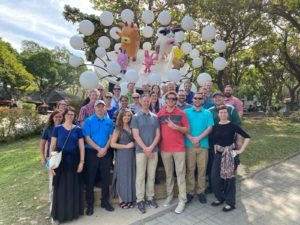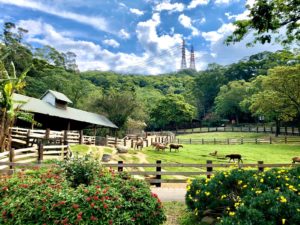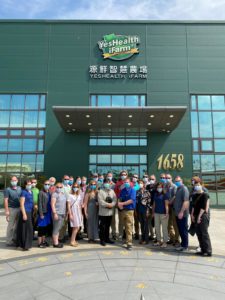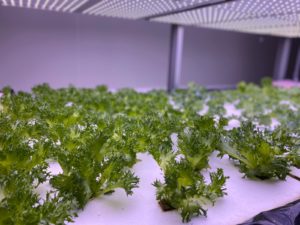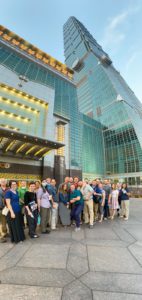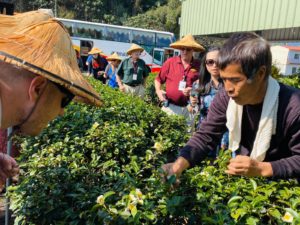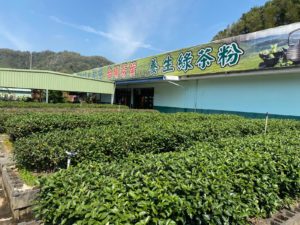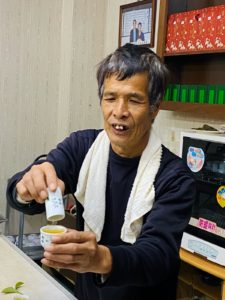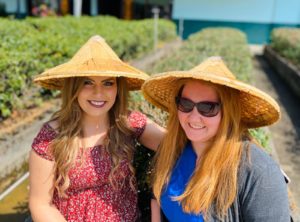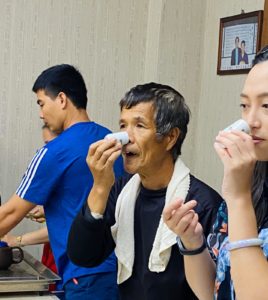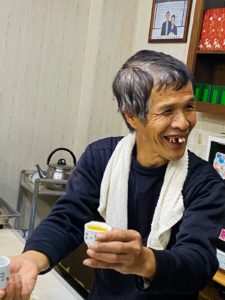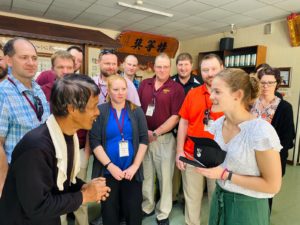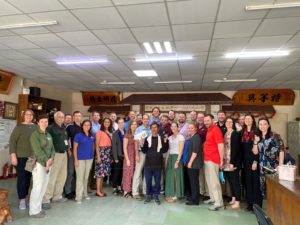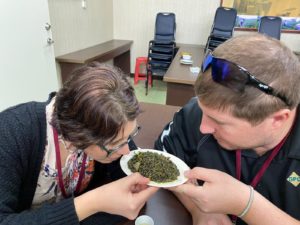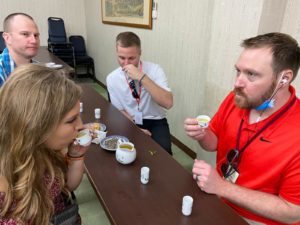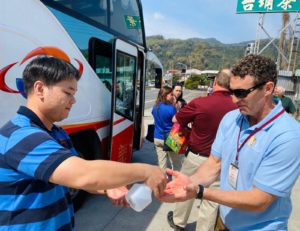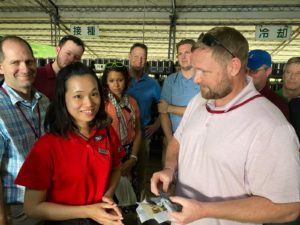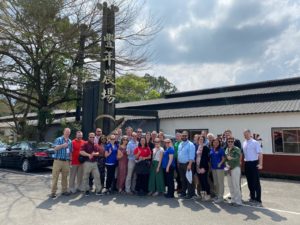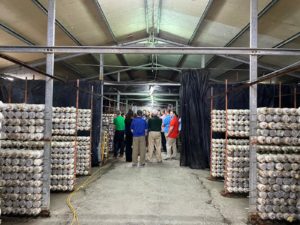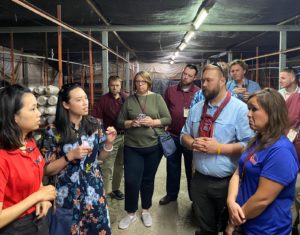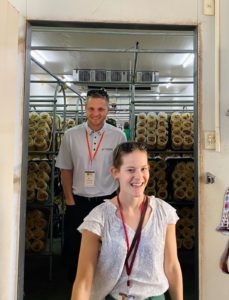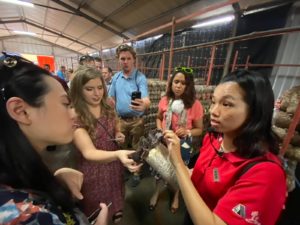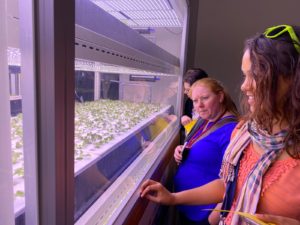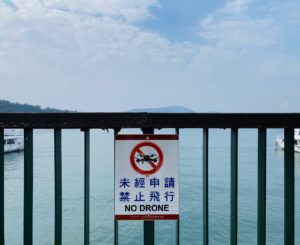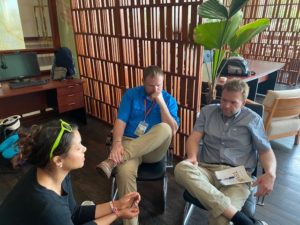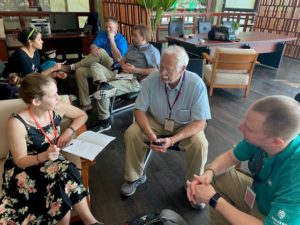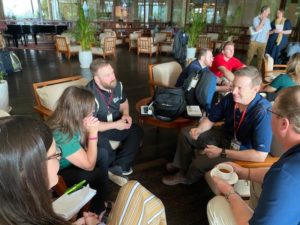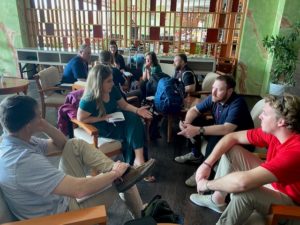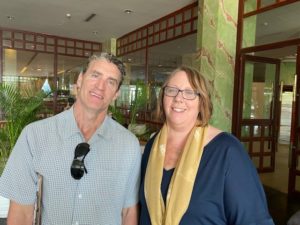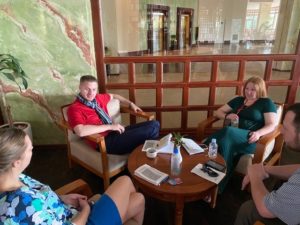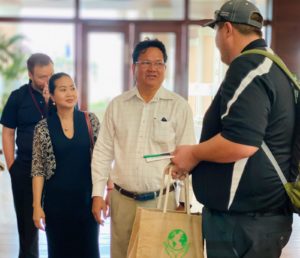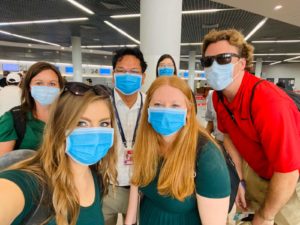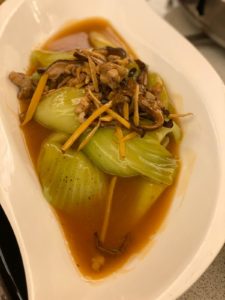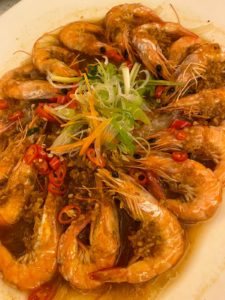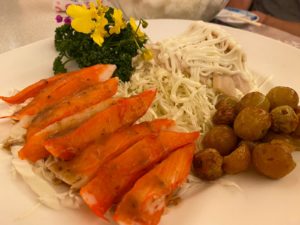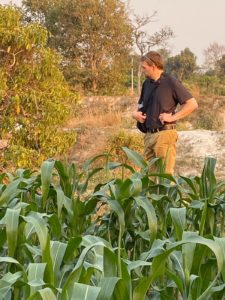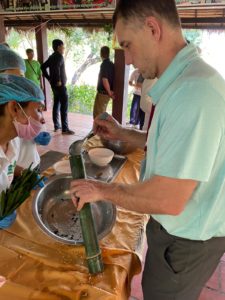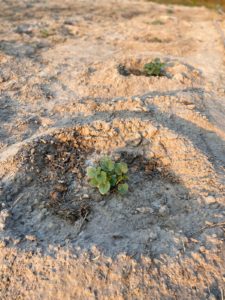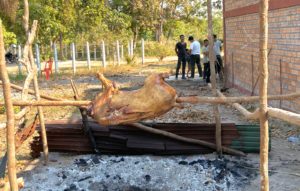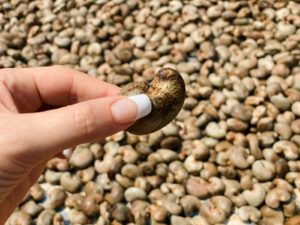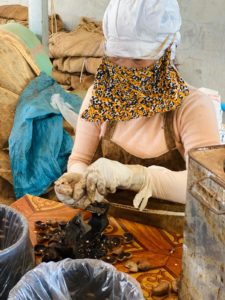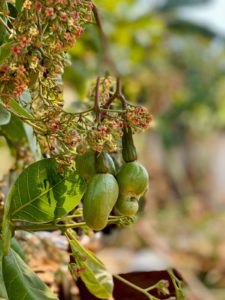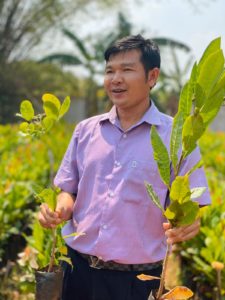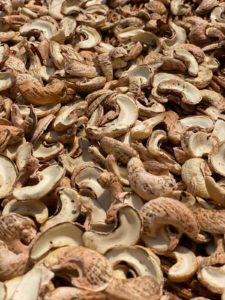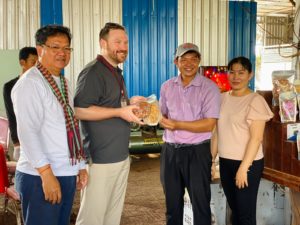The day started off in Siem Reap at the hotel with a large breakfast of traditional and non-traditional foods. Most of us chose to grab a couple fried eggs or an omelette with a couple pieces of toast instead of pho or congee. After breakfast we had a reflection on the previous days activities as well as a breakdown of the schedule for the day. After the meeting we loaded the bus and left Siem Reap on another adventure.
Our first stop was at Dr. Noy Sun’s diversified agriculture farm. At his farm we saw livestock, fruit trees, and water management. At the farm we learned about the differences in the different livestock in country. Dr. Noy raises a cross between brahma and Nellore for a smaller body frame and better meat production. He also had chickens, ducks, and geese that were grown for egg and meat production. The farm was 85 hectares and located along a river. It was intriguing to learn about how he was using solar power to manage water through wells on his farm. We also saw on his farm how they were alternating coconut trees with banana trees which was a new concept in the country. The coconut trees are unlike the trees that most people are use to seeing as they are short enough that the fruit can be picked with a short ladder from the ground. It was also very interesting to learn that when banana fruit is picked from the trees they always leave 100 bananas to maintain the health of the tree. We then loaded the bus for the trip to the Run-Ta-Ek Cooperative.
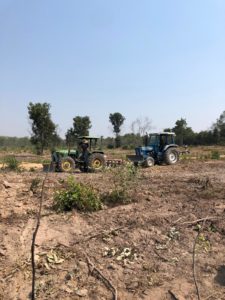
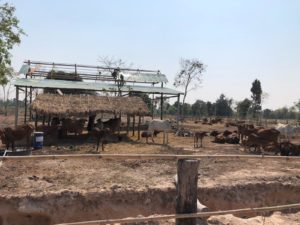
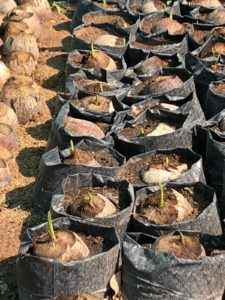
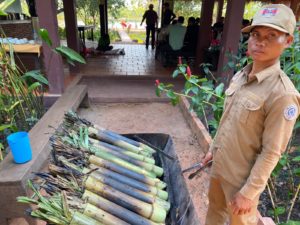
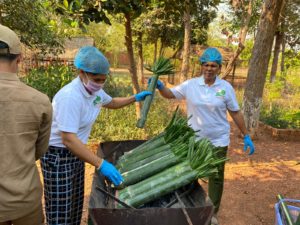
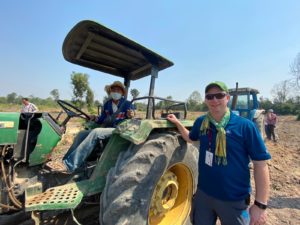
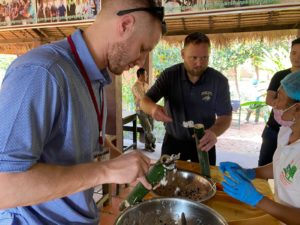
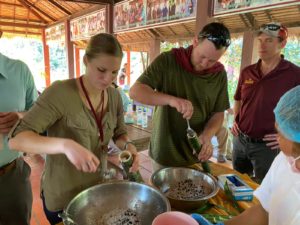
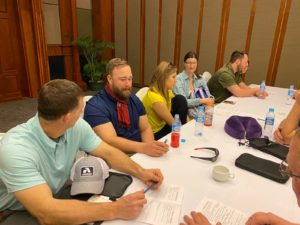
At the cooperative we were greeted by the cooperative leadership and some distinguished guests. It was apparent they were very excited to have us there and welcome us to experience their culture and the community. We were seated for lunch and were served an authentic Cambodian meal including fish, pork, chicken, papaya salad, moringa soup and, of course, white rice. Like most of our meals we had fresh fruit as a desert and we had some extremely delicious mango from Dr. Noy’s farm. We viewed a short presentation about the Cooperative and what they do there.
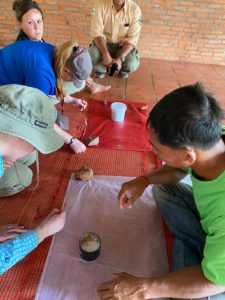
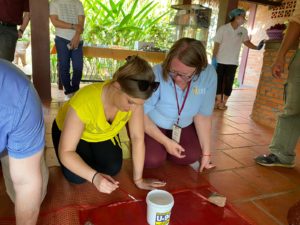
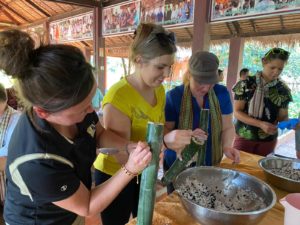
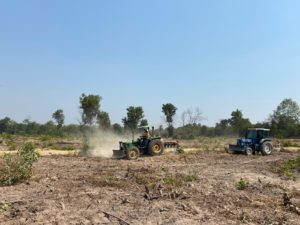
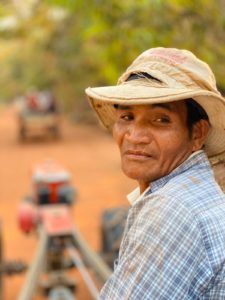
Following the lunch and presentation we delivered the bicycles and educational supplies that our class purchased to give to the students. There were 90 students in the Cooperative and 30 students were chosen the receive a bicycle. It was a very rewarding experience to see the expressions and emotions that the students and families expressed when their names were called. Having a bicycle provides a much easier lifestyle for people and can often be the difference in going to school or not. We then handed out a Magnadoodle board, a pencil pack, and some snacks to the remaining students and again saw how excited they were to receive those. It was a great experience that made many of us think a little deeper on our own experiences and how life is much different is other places.
A tour of the homestay dwellings followed and we got a chance to see the amenities. They were built on legs, had concrete floors with seating below and an enclosed sleeping area above with electricity. The sleeping pads had mosquito nets Around them and fans to help with air movement. There was a western toilet in the commode and a bathing area attached as well. These are what the Cooperative families live in and would provide an intimate insight into life as a Cooperative family.
After the homestay visit we had a chance to make sticky rice, paper lanterns and observe the roasting of the whole cow that was being served for the evening meal. The sticky rice is traditional snack that is served often in the mid-morning/afternoon containing white rice, beans, sugar and coconut milk. We each had a chance to see the mixing and got to pack it into our own bamboo shoot. The bamboo shoots are then placed over a bed of coals for 3 hrs to cook the rice mixture inside. We then all took turns helping to construct the paper lanterns we were going to release that evening. Finally, we went behind the building to see the cow that was being roasted. It was smaller than any of us expected as it was maybe 500# live weight and we learned it was 18 months old to get that big.
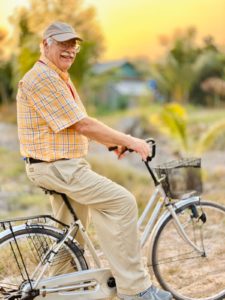
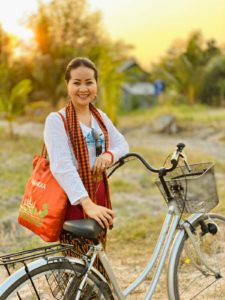
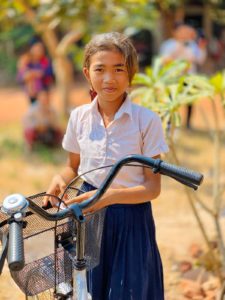
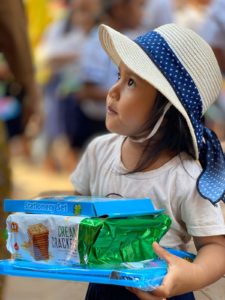
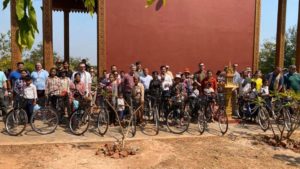
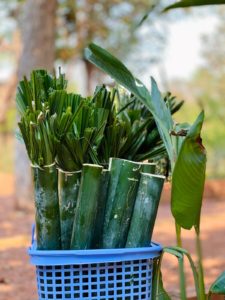
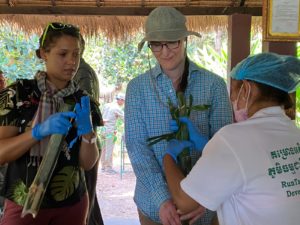
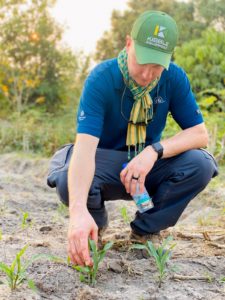
Our final activity before the evening meal was a tractor tour of the Cooperative farm to see what they grow and learn about their operations. We loaded up in 4 Kubota wagon tractors which have a 9 hp 2 stroke engine coupled with a transmission and 2 hand brakes to help with steering. The wagons supported about 2,200 lbs and are used to transport everything from produce to people. We saw their Moringa and Velvetbean fields first and learned the uses of those crops. The moringa is a shrub and they harvest the leaves to be used in soups, tea and as a herb. The velvetbean is used as a stimulant to improve dopamine in the brain and is paired with different extracts to create many products. The tractors then took us to see some Roselle plantings that are used in a sweet tea followed by their corn plantings. The corn reaches maturity in 8 weeks and planting is staggered to provide a continuous supply of corn throughout the year. We then headed back to the gathering area for our evening celebration.
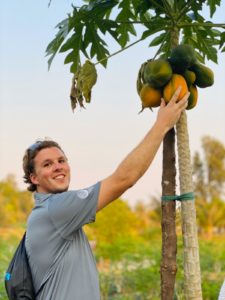
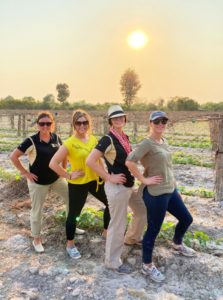
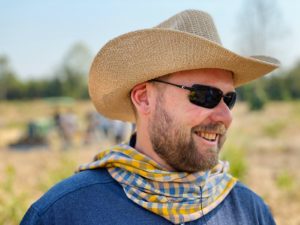
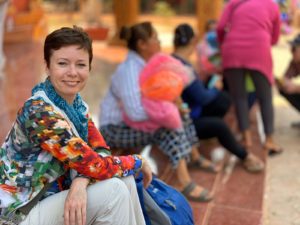
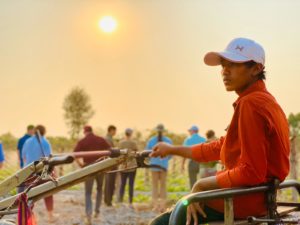
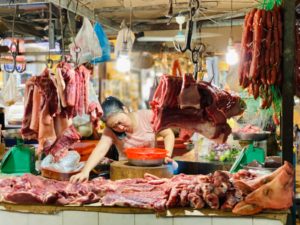
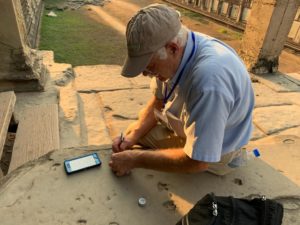
To finish the evening we went back to the shelter where we began the day to take part in a traditional evening celebration that included music, a meal, and dancing. The cow that was being roasted earlier in the day was served as an appetizer to start off the evening meal. The cooks would carve off chunks of beef, marinade them in a sauce pan, then grill them over a bed of wood coals. The meat was sliced thin and served with a fish sauce. The meal included many authentic Cambodian dishes including; the sticky rice that was made earlier in the day, mango salad with tiny fresh water crabs, a bean sprout, chicken, and shrimp egg and rice flour pancake that could be dipped in a fish sauce, roasted chicken and pork served with a spicy chili sauce, beef liver, tongue, and tripe also served with a spicy chili sauce, chicken livers, white rice and fried rice with shrimp and vegetables, fresh vegetables, and to finish the meal we had fresh watermelon and papaya. We enjoyed this meal as we sat next to one of the many small lakes in the community and enjoyed traditional Cambodian folk music. After eating our program leaders were pulled out in front of the group and were taught Cambodian dance. After a few minutes we all joined in the dance and you could
feel the happiness of both the community and our group. We finished the evening lighting off the lanterns we had made earlier in the day which in our opinion was a magical way to end the evening. The co-op leadership was thanked for the wonderful day of learning
and sharing and prior to departing we left the community with a gift of many household items and groceries we had purchased in Siem Reap during one of our MARL activities. What a day and what a special opportunity to meet new people and create new relationships
through learning, food, and dance.
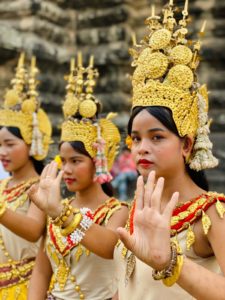
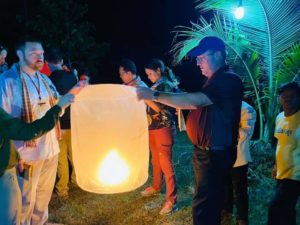
Austen Germolus
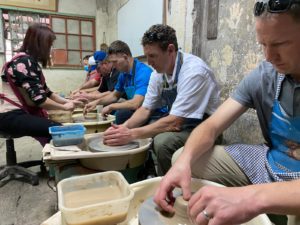
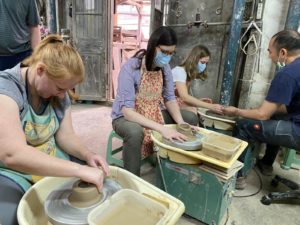
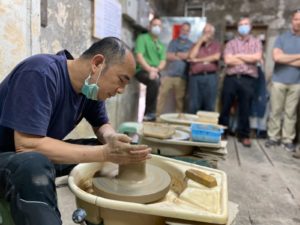 Our next stop after lunch was a personal favorite of mine, the Yingge Old Street Market. The class received a demonstration showing how to mold a piece of clay on the pottery wheel into a cup, a bowl or a vase. A number of MARL classmates tried their hand at throwing their own piece of pottery on the wheel. In the meantime I went to look for a piece of local pottery for my wife, who is a professional potter on our farm in Minnesota.
Our next stop after lunch was a personal favorite of mine, the Yingge Old Street Market. The class received a demonstration showing how to mold a piece of clay on the pottery wheel into a cup, a bowl or a vase. A number of MARL classmates tried their hand at throwing their own piece of pottery on the wheel. In the meantime I went to look for a piece of local pottery for my wife, who is a professional potter on our farm in Minnesota.